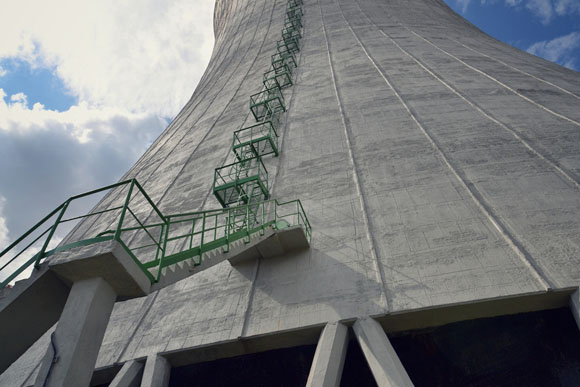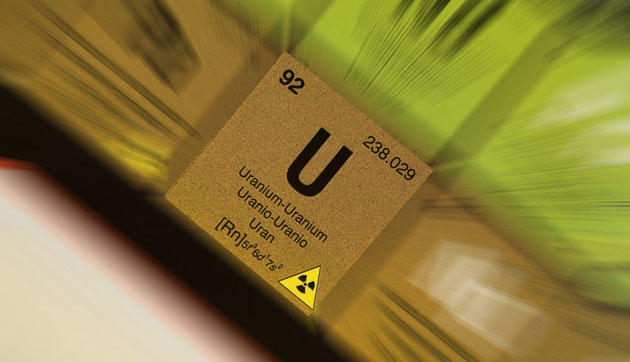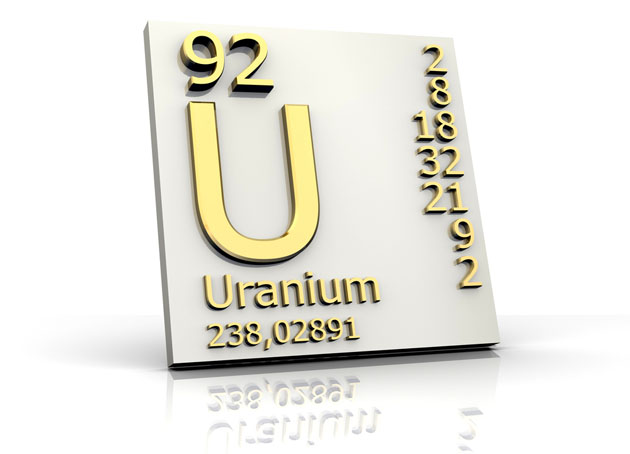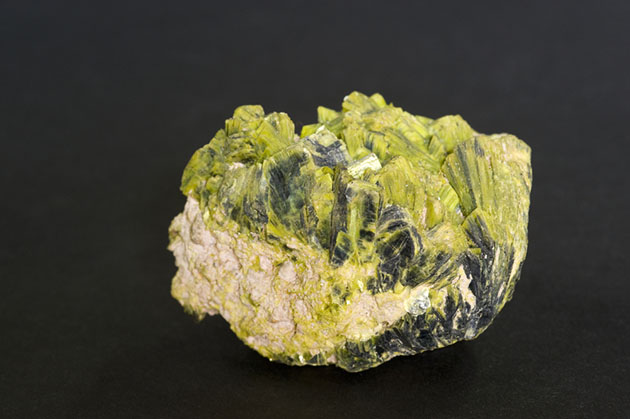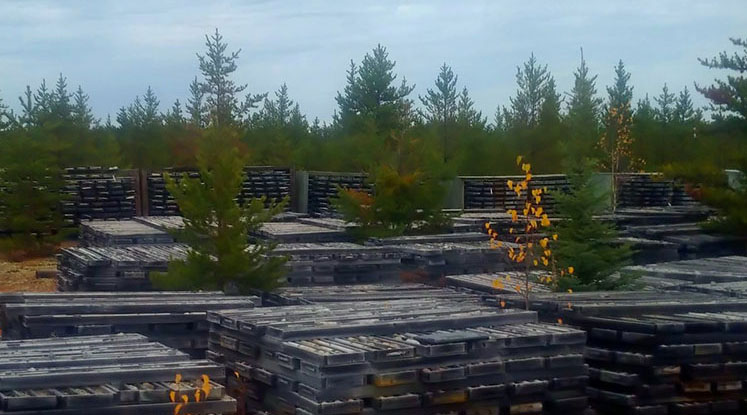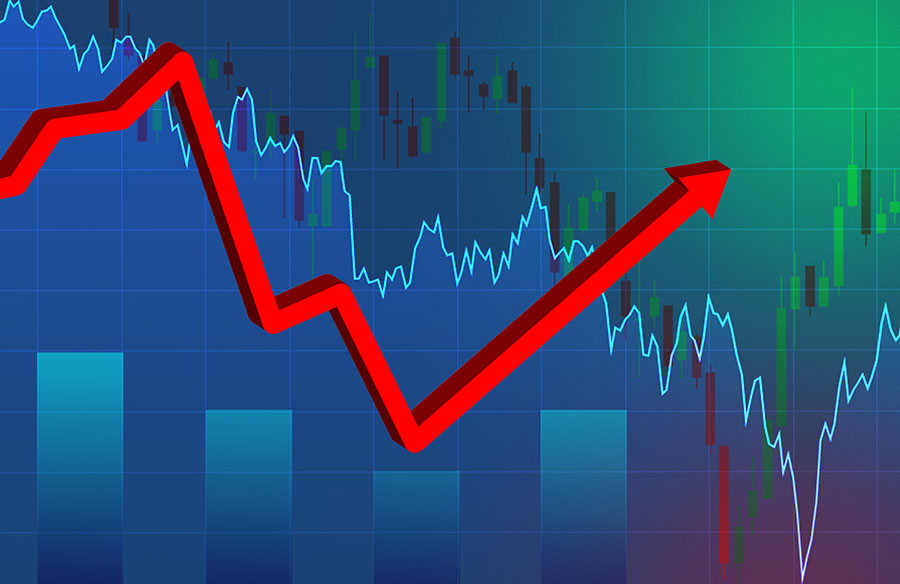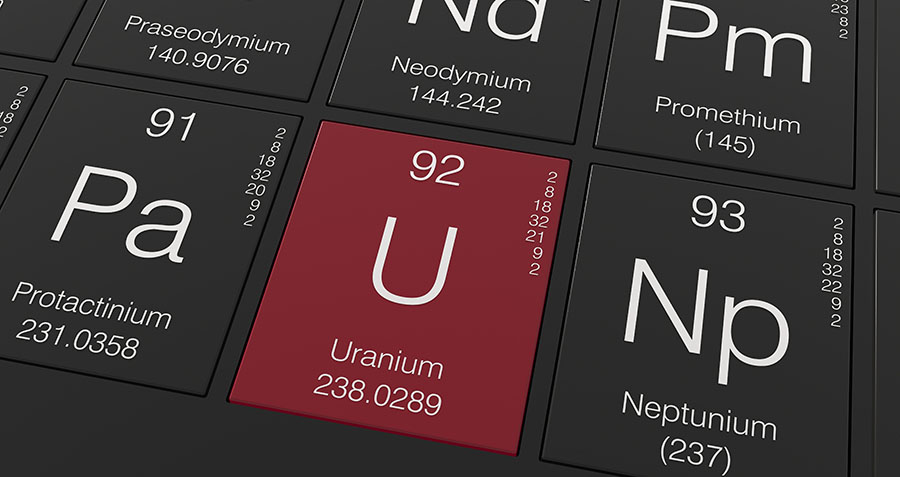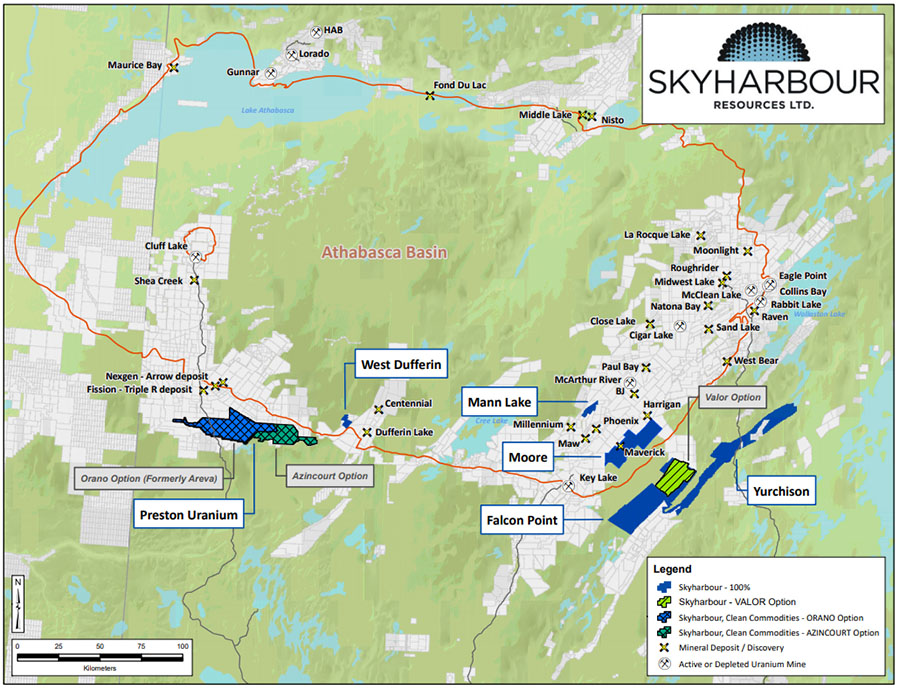Edward Sterck: It hasn't yet had any impact. Sanctions haven't been brought in that are affecting the Russian nuclear industry, but there is the potential for that to occur. Indeed Rosatom, which is the Russian state umbrella company that covers Russian nuclear activities, has made a statement to the effect that business is continuing as normal, including the delivery of nuclear fuel to Ukrainian reactors, but sanctions could affect its ability to make deliveries under current contracts to Western utilities and Western customers in general.
If that occurs, it isn't likely to have an impact on the supply of natural uranium to the market, but Russia is the world's biggest supplier of enrichment, and it has a number of western customers for that enrichment.
The potential for reduced availability of enrichment capacity to the West could have a knock-on effect on uranium prices. The way in which this could occur is a little complicated, but effectively if you've got reduced enrichment availability to make a required amount of nuclear fuel, you can compensate by using more natural uranium and then less enrichment. The analogy is that to make orange juice, you can either squeeze a given number of oranges to get a given amount of juice or you can use fewer oranges and squeeze them harder to get the same amount of juice. Effectively, if sanctions are brought in against Russia and they do encompass the nuclear industry there, we could eventually see a knock-on effect and an increased demand for natural uranium from western utilities.
TMR: And what about Japan's restart?
ES: At the moment there are 17 reactors that have been put forward for the restart process. Two of them have been shortlisted for restart. Those two reactors are going through the final rounds of safety checks and public consultations, but unfortunately at this point we still don't have a clear idea of what the timing would be. Prime Minister Shinzo Abe's government is keen to see the first restarts before the summer, which is the period of peak electricity demand in Japan. If that occurs, we could see the first reactors restart around the middle of the year. Hopefully some further reactors restart after that.
In terms of what reactor restarts in Japan mean for the market, it's more of a derisking event for the equities and probably won't have an immediate effect on the uranium price. Since Fukushima, Japanese utilities have by and large continued to take deliveries of their contractual commitments, so they have accumulated quite significant levels of excess inventories. Their engagement in the market and their need for new material beyond what they're already contracted to take will probably remain fairly suppressed for quite a few years to come, even after restarts have commenced.
TMR: Given the long-depressed uranium price, is that going to extend the doldrums for the price?
ES: Not necessarily. One of the impacts of the low price is that producers are beginning to shut down production. Some of the higher-cost operations, such as Paladin Energy Ltd.'s (PDN:TSX; PDN:ASX) Kayelekera project in Malawi, are being put onto care and maintenance. No new significant projects are being pushed forward at the moment for production. In this case, the knock-on effect of low prices is a reduced supply outlook.
Despite Japan, we do still have a nuclear industry that's growing, driven mainly by China, but also by some of the Middle Eastern countries and a handful of other places. That does lead to future demand growth for natural uranium. On my estimates we end up in a situation where supply is insufficient to meet demand in 2018, and it enters a fairly deep and sustained deficit thereafter.
There are some positive price indicators. Last year the long-term contracting market was extremely quiet. Normally you'd see around 170 million pounds (170 Mlb) of uranium signed into long-term contracts, but the volume was only about 20 Mlb last year. Utilities appear to be pretty well covered for near-term requirements, and they were putting off signing contracts as a result. This year, the amount of contracting activity has picked up. A number of U.S. utilities in particular are coming to the market looking for long-term contracts, which suggests that they are beginning to feel that they are less well covered than they perhaps were at this time last year. It's interesting to note that they are typically looking for new contracts on a fixed-price basis, which suggests that utilities think that prices probably have to rise at some point in the future as well.
TMR: Since you spoke with The Energy Report nearly two years ago, the uranium price has continued to trend lower. What has kept you interested in the uranium space?
ES: One of the reasons I'm interested in the uranium space, and also quite a number of investors are, is that when the uranium price moves, it tends to move quite dramatically. That also translates into movement in the share prices of the uranium mining equities. It's a subsector of the mining space that's worth keeping an eye on because there's an opportunity there when it does begin to move.
TMR: What is the significance of Denison Mines Corp.'s (DML:TSX; DNN:NYSE.MKT) discovery at Wheeler River?
ES: It's probably the best exploration project that Denison has. It's a typical Athabasca-style deposit consisting of high-grade mineralization in quite a small area, which makes defining it quite tricky. It requires a lot of precision drilling. At the moment I'd say that the defined resource isn't substantial enough for it to be a candidate for a development decision, but Denison has had some recent drilling results in a separate zone about 3 kilometers away from the existing resource that has returned some interesting hits that it plans to follow up on in the summer drilling program.
If Denison manages to expand the mineralization it has identified in that separate zone, it's possible that it could get to the point where Wheeler River reaches a critical mass. I think it would probably also require higher uranium prices than what we see today, but to be completely honest, that's probably the same as any uranium exploration project right now. I can't see anyone pushing ahead with development decisions at $35/lb U3O8. Given mining costs, you'd have to have a very special project indeed to make that sort of decision.
TMR: What is Denison after in acquiring International Enexco Ltd. (IEC:TSX.V; IEXCF:OTCQX; I6E:FSE)?
ES: Denison has made a few acquisitions over the last 18 months or so. I think that International Enexco falls into its strategy of building a substantial land package in the Athabasca. It's about controlling acreage and building up an interesting exploration portfolio. Denison has also acquired some companies with assets in Africa. The company has said that its plan is to become an Athabasca-focused exploration company and then potentially spin out its African assets as a Denison Africa stock play.
TMR: What's the thinking behind your market perform recommendation on Paladin Energy Ltd. (PDN:TSX; PDN:ASX)?
ES: Paladin is in an interesting but slightly tricky place right now. It's got two producing assets, one of which, as I mentioned earlier, is being put on care and maintenance, but operationally it has made some significant improvements at both its cornerstone projects, Langer Heinrich and Kayelekera. It has been driving down operating costs. Langer Heinrich, the operating mine, is still the focus. Paladin recently sold a minority stake in that to raise some cash.
Paladin's balance sheet is somewhat stretched at the moment. It took on a lot of debt during the uranium boom to build these mines, and the cash flows in this uranium price environment have not allowed Paladin to meaningfully pay down that debt. That's the rationale behind the market perform.
The projects look interesting, albeit that Kayelekera is on care and maintenance at the moment, and certainly have a long-term strategic value. If we see the uranium price go up, you've got a ready-built mine with a 3 Mlb capacity at Kayelekera, and Langer Henrich has several decades of resource life. The challenge is that leveraged balance sheet, so the market perform reflects the two conflicting attributes of Paladin: the positive attributes and then the negative attributes of the balance sheet.
TMR: What is the significance of Cameco Corp.'s (CCO:TSX; CCJ:NYSE) startup of its Cigar Lake mine?
ES: It's a pretty significant project, almost on par with its biggest operation, McArthur River. It should be a relatively low-cost operation, coming into the first quartile of the cost curve once it's at full steam. Cigar Lake is an important project for Cameco for future cash flows. It replaces the material that Cameco benefitted from through the Megatons to Megawatts deal between the U.S. and Russia, where Russian warheads were being downblended and sold to western utilities. Cameco was one of the conduits for that uranium to reach the market. The company is now working through the last of the inventory from that. Cigar Lake is a pretty key project for Cameco, and for nuclear utilities of the world.
TMR: AREVA SA (AREVA:EPA) has the McClean Lake mill near the Cigar Lake startup. Is CIgar Lake going to significantly increase the value of that mill?
ES: I think the value of McClean Lake is one that will benefit from Cigar Lake material going through it, but it also benefits more from a strategic value, which is quite hard to put a dollar figure on. It's one of only two mills up in that part of Athabasca; the Rabbit Lake mill is not too far away from there. I think permitting a new mill today in that area with a new tailing facility would probably be challenging. If we look at the other projects that might be developed in that region, the likelihood is that you'd probably have to toll treat material through one of the existing mills. That's really where the strategic value of McClean Lake comes in.
TMR: Are there any other companies in your uranium coverage universe that you see as attractive takeover prospects?
ES: At the moment, not really. I think most companies have their heads a bit below the parapet. We are seeing a bit of consolidation in the mid- to small-cap space, but it's mainly Denison taking over smaller companies. Within the larger caps, I would expect the status quo to continue. If we saw uranium prices fall further and Paladin was looking more and more distressed due to the balance sheet, then someone could make a low bid for them. I'm not sure we're there just yet. I think that would require a lower share price than where we stand today.
TMR: Do you see any really exciting companies in your coverage universe that we haven't discussed?
ES: I think if the uranium price goes up, most of the uranium equities should benefit. It just comes down to everything being somewhat hinged on the uranium price at the moment. I'm waiting for that turnaround to occur.
TMR: I'm impressed with what we've covered today. Thanks for your time.
ES: You're welcome. Thank you.
Edward Sterck covers uranium, diamond, platinum group metal and European copper mining companies for BMO Capital Markets. He joined BMO in 2007, prior to which he was a mining analyst at Hargreave Hale. Before working in mining research, he spent more than four years trading government bond futures on a proprietary basis. Edward holds a Bachelor of Science in geology with honors from the Royal School of Mines, Imperial College London.
Want to read more Mining Report interviews like this? Sign up for our free e-newsletter, and you'll learn when new articles have been published. To view recent interviews with industry analysts and commentators, visit The Mining Report homepage.
DISCLOSURE:
1) Tom Armistead conducted this interview for Streetwise Reports LLC, publisher of The Gold Report, The Energy Report, The Life Sciences Report and The Mining Report, and provides services to Streetwise Reports as an independent contractor. He owns, or his family owns, shares of the following companies mentioned in this interview: None.
2) The following companies mentioned in the interview are sponsors of Streetwise Reports: None. Streetwise Reports does not accept stock in exchange for its services.
3) Edward Sterck: I own, or my family owns, shares of the following companies mentioned in this interview: None. I personally am, or my family is, paid by the following companies mentioned in this interview: None. Full company disclosures are available online. I was not paid by Streetwise Reports for participating in this interview. Comments and opinions expressed are my own comments and opinions. I had the opportunity to review the interview for accuracy as of the date of the interview and am responsible for the content of the interview.
4) Interviews are edited for clarity. Streetwise Reports does not make editorial comments or change experts' statements without their consent.
5) The interview does not constitute investment advice. Each reader is encouraged to consult with his or her individual financial professional and any action a reader takes as a result of information presented here is his or her own responsibility. By opening this page, each reader accepts and agrees to Streetwise Reports' terms of use and full legal disclaimer.
6) From time to time, Streetwise Reports LLC and its directors, officers, employees or members of their families, as well as persons interviewed for articles and interviews on the site, may have a long or short position in securities mentioned. Directors, officers, employees or members of their families are prohibited from making purchases and/or sales of those securities in the open market or otherwise during the up-to-four-week interval from the time of the interview until after it publishes.



